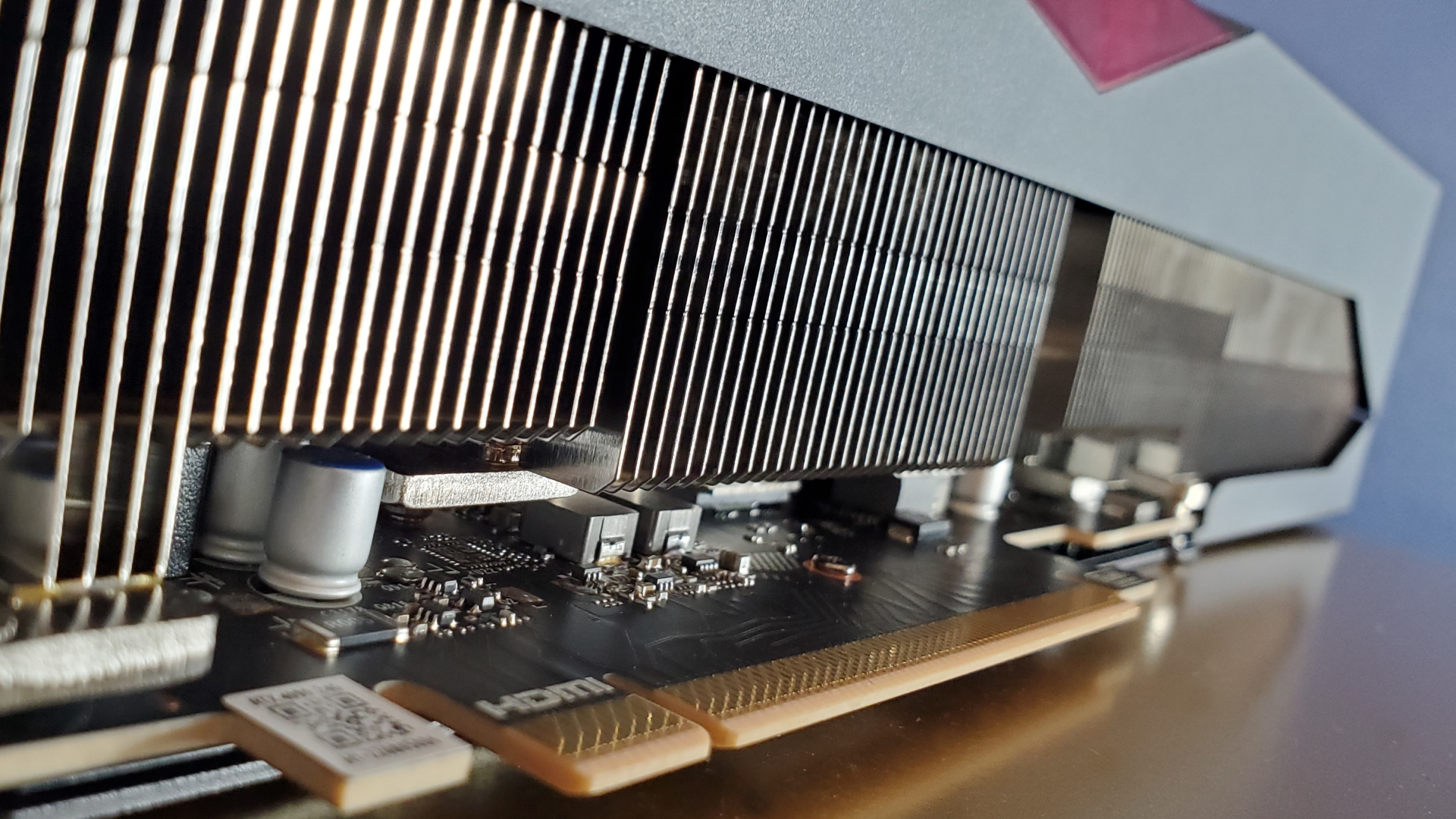There’s going to be a beefier GeForce RTX 4080 on its way in the first few months of 2024, so is the latest graphics card rumour on the social grapevine. The name, Super or Ti, has yet to be decided but it’s supposed to be using a cut-down version of the AD102 GPU, that’s the GPU currently powering the RTX 4090. Power limit is supposed to be less than 450W and the price range is similar to the RTX 4080’s.
This is all according to MEGAsizeGPU on Twitter (via Videocardz) but as with any post on social media with precisely zero hard evidence to back it up, it’s best to treat it as being no more than a shower thought, regardless of who actually posts it. That’s said, there’s some merit to breaking down what’s actually being claimed.
Let’s start with the use of the AD102. The current GeForce RTX 4080 uses the smaller cousin of Nvidia’s top-tier GPU, the AD103. That has a maximum of 80 SMs (Streaming Multiprocessors, which contain all of the shaders, tensor cores, and ray tracing units) and a memory bus that’s 256 bits in total width.
However, the version that’s used in the RTX 4080 only has 4 SMs disabled and the rest of the die runs as normal. This means that there’s little tangible benefit to creating a faster product using that chip, as a fully enabled AD103 running at the same clock speed as the one in the RTX 4080 would just be a few percent faster.
The AD102 has lots of potential, though. That chip has up to 144 SMs and the full bus width is 384 bits. The GeForce RTX 4090 uses one with 128 SMs enabled, so Nvidia could use one with, say, 100 SMs for an RTX 4080 Ti. This is the chip that’s already used in the RTX 5000 Ada Generation workstation card and it runs with a similar clock speed to that in the RTX 4080, albeit with a much lower power cap.
Such a configuration could see the Ti version being as much as 25% faster than the original model, especially if the card used a 320-bit memory bus configuration and drops in 20GB of VRAM, too. The RTX 4080 hasn’t been a runaway success for Nvidia, as its price is vastly higher than any previous 80-class model. The GeForce RTX 3080 launched with an MSRP of $799, whereas the RTX 4080’s was $400 higher. An updated version of the Ada Lovelace card wouldn’t be cheaper but if the price was the same, or within a handful of bucks, then a Ti variant might fare better.
Even so, I struggle to believe the market will be all that interested. While the RTX 4090 is ridiculously expensive, there’s a clear mindset among such consumers that if you can afford an RTX 4080, you might as well spend more to get the 4090. It’s not going to be any different with a 4080 Ti, especially since Nvidia isn’t going to position its performance too close to the 4090.
(Image credit: Future)
And this is just one part of the whole RTX 40-series problem: Nvidia put itself into a position where it’s going to struggle to do model refreshes that will attract buyers, with attractive specs and price points, without killing everything that has gone before. The Ti variants of the RTX 4070 and 4060 already exist, so what name would Nvidia use for faster versions of those?
The Super moniker has only been used once before, in the Turing series, and was used instead of Ti, apart from the RTX 2080 which had both. If Nvidia does revive the name, it might cause confusion amongst those who currently own a Turing-based Super model and are looking to upgrade. If it doesn’t and just releases the refreshed version with the same names as the old ones, how would you easily tell them apart?
Nvidia will need to do something, simply because its inventory of Ada Lovelace GPUs will be filling up with dies that currently don’t have a specific model to be housed in. All large scale chips go through a process called chip binning once they’ve been made. This involves testing all the sections for correct operation, as well as running them at a variety of clock speeds and voltages.
Those that fail to meet the requirements for a current model, but are still perfectly usable, are placed in storage until they can be utilised elsewhere. In the past, Nvidia did this by using them in Ti or Super versions or by putting high-end chips into lower-end models and disabling various parts, without changing the product name.
(Image credit: Future)
Best CPU for gaming: The top chips from Intel and AMD.
Best gaming motherboard: The right boards.
Best graphics card: Your perfect pixel-pusher awaits.
Best SSD for gaming: Get into the game ahead of the rest.
But we’ve already got RTX 4060/4070 Ti models on the market, so if Nvidia does launch an RTX 4080 Ti in the first quarter of 2024, what else is left to be released? It could spoil us with an RTX 4050 (please don’t) but that’s the only segment that doesn’t currently have a 40-series model. Maybe it will give us an RTX 4070 Ti Super that sports 16GB of memory using the AD103 GPU and a 256-bit bus. Would be fun to see if Nvidia can fit the entire moniker onto a Founders Edition shroud.
For next year, it’s going to be refreshed versions or nothing at all, with Nvidia’s next generation of GPUs not expected to arrive until well into 2025. Obviously, this is all down to Nvidia to fix, but it has to be said that the Ada Lovelace generation of GeForce cards has been a mess, in terms of product names and specifications. Had the jolly green giant stuck to the GPU tiering system it used with Ampere, it wouldn’t be in this situation at all.










